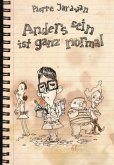Jane Mumford ist ein Multitalent: Musikerin, Kabarettistin, Illustratorin und Autorin. Alles, was sie anfasst, macht sie sehr gut. Reptil heisst ihr erstes Buch, gleich wie ihr erfolgreiches Bühnenprogramm. Aus diesen Texten hat sie nun ein kaltblütiges Libretto geschrieben, das uns freudig erschaudern lässt.Dass ausgerechnet wir Menschen so lange überlebt haben auf der Erde! Die Pest hat's versucht, Vulkane haben's versucht, wir versuchen's sogar selber immer wieder mit Krieg und Mord und Eurovision Songcontests ... aber wir überleben als Spezies. Stinkfrech und unverdient. Dabei sind Blut, Schweiss und Tränen doch von gestern! Es ist an der Zeit, dass Säugetiere ihre Vormachtstellung auf diesem Planeten abgeben. Wer in der Gesellschaft von heute überleben will, wird am besten kaltblütig. Dieses Buch ist zwar keine direkte Anleitung dazu, aber es enthält Gedanken dazu sowie zu Sinn und Wahnsinn, Liebe und Tod, Zufall und Schadenfreude. Ja, zwischen diesen Polen mäandern Lesende dieses Buches in einem skurrilen Sinkflug durch die Gedankenwelt von Jane Mumford (ihres Zeichens immer noch Säugetier). Sie kroch vor zehn Jahren zum ersten Mal auf eine offene Bühne und ist, ähnlich wie etwas, das man sich in den Sommerferien aufliest, schwer wieder loszuwerden. Ihr Soloprogramm REPTIL, auf dem dieses Buch basiert, feierte 2021 Premiere und hält sich seither hartnäckig auf den Kleinkunst- und Comedybühnen des deutschsprachigen Raums. Aber dieses kaltblütige Libretto ist anders. Die Show spielt sie für einen ganzen Raum voller Menschen. Dieses Büchlein hingegen gehört ganz allein dir. Gespickt mit zahlreichen Illustrationen der Künstlerin.
Bitte wählen Sie Ihr Anliegen aus.
Rechnungen
Retourenschein anfordern
Bestellstatus
Storno








